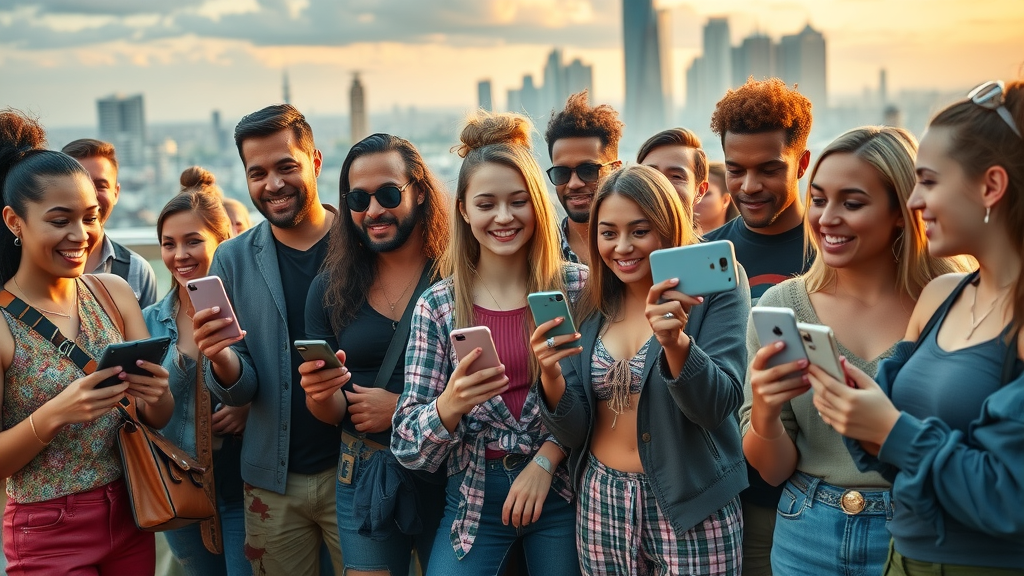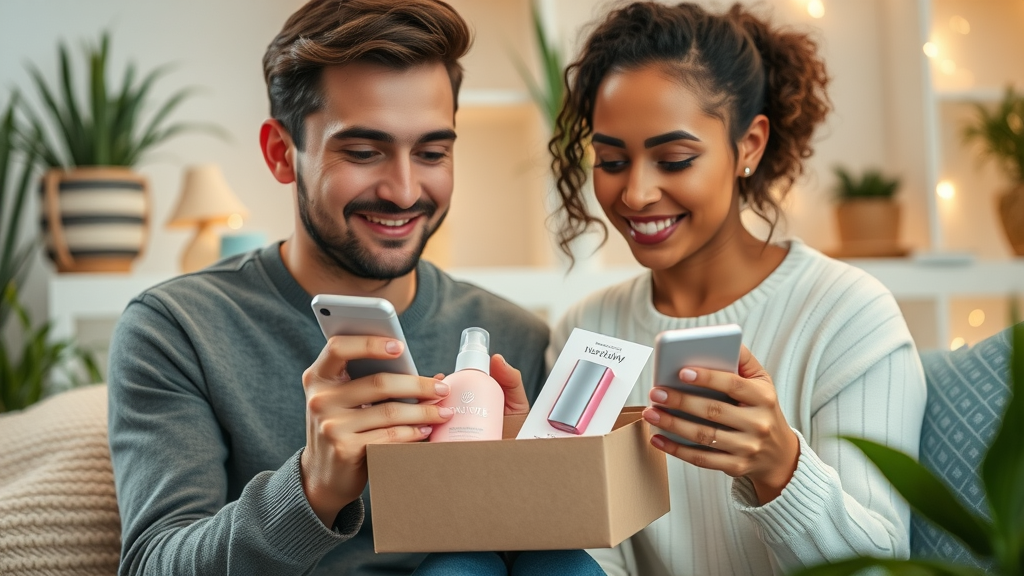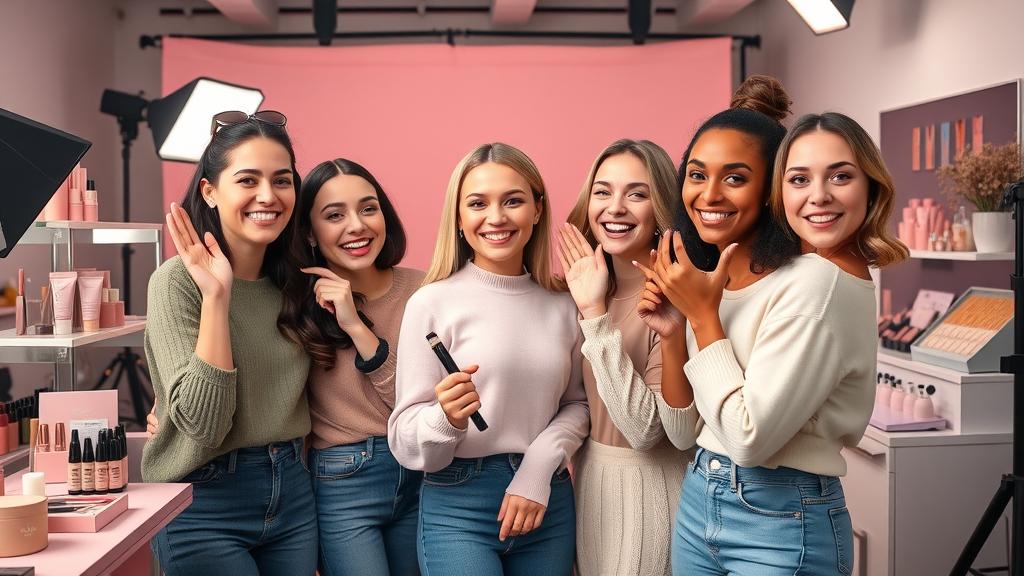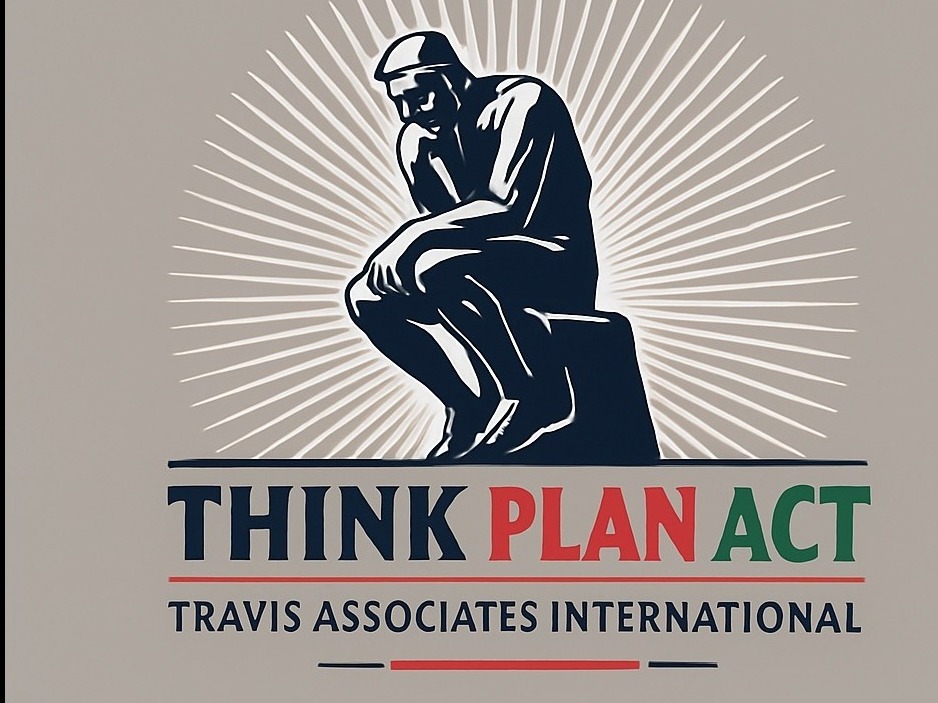Did you know? An overwhelming 89% of marketers say the ROI from influencer marketing matches or surpasses that of any other marketing channel. In a world where digital trends change rapidly, brands that leverage social media influencers are seeing record-breaking growth and engagement. This guide will show you how to harness the power of influencer marketing, debunk common myths, and lay out actionable steps you can take—whether you’re a startup or an enterprise brand. If you’re ready to learn the secrets behind the explosive success of influencer collaborations, discover practical strategies, and avoid the mistakes that hold others back, let’s dive in!
Discover How Influencer Marketing Drives Rapid Growth in the Digital Age
In today’s always-connected world, influencer marketing stands out as the fastest way to increase brand awareness and reach new customer segments. By partnering with trusted social media influencers , brands can tap into niche audiences, build authentic relationships, and create engaging content tailored for maximum impact. This isn’t just about putting a discount code in someone’s hand; it’s about building trust and community around your brand in a digital space where authenticity reigns supreme. But why is influencer marketing so effective? It all starts with how people consume content. With social media taking center stage, consumers are more likely to trust recommendations from media influencers than from traditional ads. Successful influencer marketing campaigns are tailored, data-driven, and measurable—delivering results where other forms fall short.
Practical Example: Imagine launching a new skin-care product. Instead of running a generic ad, you collaborate with a popular beauty influencer whose audience matches your target demographic. The influencer’s product review video receives thousands of likes, shares, and comments—translating directly into website traffic and sales. This isn’t the future; it’s happening every day for brands mastering the right social media marketing strategy.

"Recent studies reveal that 89% of marketers find ROI from influencer marketing comparable to, or better than, other marketing channels."
Demystifying Influencer Marketing: What It Is & Why It Matters
- Definition of influencer marketing : Influencer marketing is a digital strategy that leverages media influencers —trusted content creators, celebrities, or specialists on social media platforms —to promote products or services to a highly engaged audience.
- The evolution of influencer marketing in the era of social media : Born from the synergy between social media and personal branding, influencer marketing has evolved from celebrity endorsements to partnerships with micro influencers, nano influencers, and even everyday users who command loyal niche followings.
- Why brands invest in influencer marketing campaigns : Today’s consumers crave authenticity. Brands invest in influencer marketing because it delivers relatable, user-generated content that drives conversions, builds brand awareness, and offers a competitive edge over traditional advertising methods.

What You'll Gain from Mastering Influencer Marketing
- How influencer marketing increases brand awareness : Engaging with the right types of influencers helps your brand break through the digital noise and reach new, highly relevant audiences faster than traditional marketing campaigns could ever achieve.
- Developing a successful influencer marketing strategy : Learn how to craft a data-driven marketing strategy that aligns your objectives with the strengths of each media influencer you collaborate with—boosting ROI and engagement rates.
- Navigating influencer marketing platforms : Explore the most effective influencer marketing platform options for discovering, managing, and measuring the performance of influencer campaigns in real-time.
- Case studies of effective marketing campaigns : See how brands across the globe are using influencer collaborations to drive sales, spark conversations, and build powerful brand loyalty.
The Core Elements of a Winning Influencer Marketing Strategy
Key Principles Every Successful Influencer Marketing Campaign Shares
- Clarity in campaign goals : Every successful influencer marketing campaign starts with well-defined objectives—whether it’s boosting brand awareness , driving sales, or generating buzz around a product launch.
- Targeting the right social media influencer : Brands need to carefully research potential influencers by examining their follower count , audience demographics, and engagement metrics to ensure a perfect fit.
- Aligning influencer content with brand messaging : Seamless brand integration in influencer content helps reinforce trust and align the influencer’s voice with the company’s marketing strategy.
- Tracking follower count and engagement metrics : Reliable measurement tools and marketing platforms help brands ensure that their influencer campaigns are generating quantifiable value, not just vanity metrics.

Developing these principles will transform your approach, ensuring that every influencer marketing campaign is built on a solid foundation. By clearly articulating expectations, choosing the right influencers, and aligning messaging, campaigns can drive lasting engagement and practical business results.
Moreover, the most effective influencer marketing campaigns are those that are continuously analyzed and optimized. Leveraging the right analytics tools, brands can measure reach, engagement rate , and conversion data—enabling them to adjust tactics and improve return on investment over time. This is crucial in a fast-evolving digital landscape where audience preferences shift rapidly.
Identifying the Right Influencer Marketing Platform for Your Brand
- Popular influencer marketing platforms and their features : Leading platforms like AspireIQ, Influencity, and CreatorIQ offer extensive influencer databases, campaign management, and robust reporting tools—making influencer discovery and collaboration seamless.
- How to choose a marketing platform for your objectives : Select a platform based on your campaign goals, preferred social channels, and the types of influencers that resonate most with your audience.
- Evaluating influencer authenticity and audience quality : Use each platform’s analytics to verify real engagement, authentic audience demographics, and to spot red flags such as purchased followers or fake engagement that could undermine results.
The right influencer marketing platform is essential for connecting brands with vetted, high-potential influencers. These platforms simplify influencer outreach, streamline content approvals, provide built-in tracking dashboards, and offer end-to-end workflow automation. Before making a choice, consider what features matter most to your business—such as campaign reporting, influencer vetting, or integrated payment processing.
Choosing a platform that allows for easy analytics integration and effective influencer collaboration helps ensure your campaigns aren’t just active, but thriving. Tools that help identify authenticity protect your investment, delivering both reach and genuine engagement from audiences most likely to convert.
Exploring Social Media's Role in Influencer Marketing
Why Social Media is the Cornerstone of Modern Influencer Marketing Campaigns
- Major social media platforms for influencer marketing : The most notable sites, including Instagram, TikTok, YouTube, and Facebook, are prime grounds for influencer marketing, each boasting unique audience engagement opportunities and content formats.
- How algorithms impact influencer reach : Platform algorithms influence what content is seen by followers, affecting whether an influencer’s post goes viral or fizzles out—making content quality and timing more important than ever.
- Comparing organic vs. paid campaigns : While organic influencer content leverages community trust, combining organic posts with paid promotional boosting lets brands maximize exposure and precisely target their desired audience segments.
Influencer marketing and social media marketing are inextricably linked, with algorithms and engagement rates driving campaign success. Marketers must understand platform-specific nuances, such as trending content types and the times when posts are most effective. Leveraging both organic and paid influencer marketing campaigns enables brands to raise brand awareness, hone messaging, and drive measurable results.
Collaborating with social media influencers also opens up new avenues for creative content: think Instagram Stories with swipe-up links, TikTok video challenges, or YouTube product reviews. Each medium appeals to a different target audience—giving campaigns flexibility and scale.
"Influencer marketing campaigns on Instagram alone now represent over 70% of total influencer partnerships."
[Watch an explainer video highlighting the surge in influencer marketing across platforms—see growth charts, real campaign examples, and actionable insights.]
The Different Types of Influencers & Their Unique Advantages
| Influencer Type | Follower Count | Typical Engagement Rate | Brand Partnership Goals |
|---|---|---|---|
| Mega Influencers | 1M+ followers | 1–3% | Mass awareness, product launches |
| Macro Influencers | 100K–1M followers | 3–5% | Expanding reach, event promotions |
| Micro Influencers | 10K–100K followers | 5–10% | Niche targeting, authentic engagement |
| Nano Influencers | 1K–10K followers | 10%+ | Deep connections, hyper-local impact |

Spotlight on Mega Influencers: Massive Reach with Social Media Influencers
Mega influencers are the true celebrities of social media, boasting follower counts well into the millions. Their every post commands attention and can drive an avalanche of traffic to brands they endorse. When launching a new product or aiming for nationwide coverage, collaborating with mega influencers ensures immediate visibility. However, the engagement rate with their vast audiences may be lower than with more niche influencers, making it critical to blend scale with authenticity. For major campaigns, brands use mega influencers for splashy rollouts, high-gloss events, or international launches—often supplementing with discount codes or contests to spur viral sharing. The key? Their broad reach amplifies awareness, but brands should ensure campaign messaging aligns perfectly with the influencer’s personal brand.

Yet, mega influencers, often considered media influencers , may not always translate to the highest conversion rates. It’s essential for brands to measure beyond impressions—tracking click-throughs, conversions, and the longer-term effect on brand reputation. Choosing mega influencers that share your brand’s values ensures reach does not come at the cost of authenticity and consumer trust.
Macro Influencers: Balancing Reach and Engagement in Your Marketing Campaign
Macro influencers offer a sweet spot between mega reach and micro authenticity. With follower counts ranging from 100,000 to a million, these influencers wield significant influence in their domain, but often maintain stronger, more personal connections with their audience than the largest accounts. Brands seeking engagement rate and broad visibility often find macro influencers to be a powerful marketing tool.
A well-coordinated marketing campaign featuring macro influencers can yield higher engagement rates, more comments, and greater social sharing. For events, limited-time offers, or industry-specific promotions, macro influencers can convey trust and excitement, encouraging followers to participate. Their expertise saves brands time vetting followers and analyzing engagement metrics, as most professional macro influencers already offer detailed media kits and analytics data.
For brands launching new products or entering new markets, working with macro influencers is an efficient way to quickly gauge audience reaction and adjust messaging in real time. The mix of reach and engagement helps campaigns remain cost-effective while achieving tangible results.
Micro and Nano Influencers: Niche Audiences and Deep Brand Connections
Micro and nano influencers may have fewer followers, but their power lies in deep authenticity and trust within specialized or local communities. With engagement rates that often exceed 10%, nano influencers convert followers into customers at rates higher than any other influencer group. Their honest feedback and raw storytelling make them ideal for targeted campaigns focused on building lasting connections.

For new brands or small businesses, collaborating with micro and nano influencers is a cost-effective way to access highly motivated, niche audiences. These partnerships often feel more like personal recommendations than advertisements, earning higher credibility among followers. Influencer campaigns at this level allow brands to test messages, gather feedback, and iterate quickly on their marketing strategy.
A single micro influencer’s review can spark viral interest among a dedicated segment, while a network of nano influencers can deliver dense, targeted reach within specific communities—be it beauty enthusiasts in a city, fitness fans, or local foodies.
How to Build an Influencer Marketing Campaign That Converts
- Selecting the right types of influencers for your marketing campaign : Carefully analyze your target audience and campaign goals to choose the perfect blend of mega, macro, micro, and nano influencers.
- Crafting compelling briefs for influencers : Clear communication is essential. Providing detailed briefs ensures influencers understand your brand voice, messaging, and creative expectations.
- Setting objectives and KPIs for influencer marketing campaigns : Establish KPIs such as reach, engagement rate, click-throughs, or sales to track the return on your influencer investments.
- Best practices for FTC compliance and transparency : Always adhere to legal requirements on sponsored content disclosures to maintain trust and credibility with your audience.

A successful influencer marketing campaign begins by selecting influencers whose followers align closely with your brand’s target demographic. From there, crafting clear and creative briefs allows influencers the freedom to communicate your message authentically, while preserving brand values. Specify your preferred posting cadence, use of discount codes , hashtags, and any required messaging—yet trust influencers to deliver content in their unique voice.
Setting specific objectives and KPIs for each campaign ensures you’re able to quantify impact, optimize performance, and justify investments. Whether your aim is to spike sales, increase event attendance, or build awareness, trackable goals help you measure progress and continually refine your marketing strategy. Lastly, maintaining FTC compliance—using hashtags like #ad or #sponsored where needed—protects both your brand and your influencer partners.
[Watch a step-by-step video guide to building a high-converting influencer marketing campaign, from influencer selection to analytics review.]
Measuring the Success of Your Influencer Marketing Initiatives
Tracking Key Metrics and Analytics on Your Marketing Platform
- Engagement rate, reach, and impressions : Measure likes, comments, shares, and views to assess how well your content resonates with the target audience.
- Analyzing follower count growth : Monitor new followers gained during the campaign to determine how your marketing campaign impacts audience development.
- Attributing sales and brand awareness to influencer marketing : Use tracking links, promo codes, and analytics to link influencer activity directly to sales conversions and awareness milestones.

To unlock full value from influencer campaigns, brands must turn to analytics. Use your influencer marketing platform to benchmark engagement metrics —such as likes, comments, and click-throughs—across different influencers and compare them against campaign goals. By analyzing changes in follower count and traffic spikes, you can tie specific influencer activities directly to brand awareness and ROI.
Sophisticated marketing tools integrate with e-commerce and CRM platforms, letting you attribute sales or sign-ups back to individual influencer posts. This closed-loop approach keeps future marketing campaigns accountable and data-driven, creating a cycle of continuous improvement and higher returns.
Always ensure you measure both quantitative results (sales, new leads, conversions) and qualitative impact (brand sentiment, customer feedback) for a comprehensive overview of success. This helps refine campaign scope, pick high-return influencers, and allocate resources where they’ll deliver the best impact next time.
Examples of Successful Influencer Marketing Campaigns by Brands
- Case study: An iconic beauty brand’s micro-influencer strategy : Through partnerships with micro influencers who provided honest reviews and tutorials, the brand experienced a 22% uptick in sales, with engagement rates well above industry benchmarks.
- Case study: Global sports company leveraging mega influencers : By collaborating with top athletes and fitness personalities, the firm achieved over 10 million impressions and generated buzz for an international product launch in less than 48 hours.
- Lessons learned and strategies for scalability : Both cases underline the importance of authentic storytelling, clear briefs, and strategically selected influencer partnerships that evolve based on real-time analytics and audience feedback.

[Exclusive behind-the-scenes footage of brands planning, executing, and reviewing influencer campaigns for instant growth.]
The 3 R's of Influencer Marketing: Reach, Relevance, and Resonance
- Reach: Maximizing audience size with the right social media influencer : Ensure your chosen influencer has an audience aligned to your campaign’s demographic and scale goals.
- Relevance: Ensuring influencer alignment with your marketing strategy : The influencer’s content and audience should naturally fit your brand, creating messaging that feels authentic.
- Resonance: Driving meaningful impact through authentic influencer partnerships : Build partnerships that go beyond a single post—opt for storytelling that encourages community engagement and real conversation.
Successful influencer marketing doesn’t just target the largest audience possible—it’s about reaching the right people with the right message at the right time. Even a small, highly relevant audience can deliver outsized impact—and lasting resonance.
A winning influencer marketing campaign always balances these three R’s, creating experiences that are remembered and shared—fueling sustainable growth and deeper customer relationships.
People Also Ask
What does influencer marketing do?
- Influencer marketing leverages trusted media influencers to boost brand awareness, reach new audiences, and drive conversions beyond traditional advertising.
How do I become an influencer marketer?
- To become an influencer marketer, develop expertise in digital marketing, build meaningful relationships with social media influencers, and master the nuances of content strategy and marketing platforms.
What are the 3 R's of influencer marketing?
- The 3 R’s are Reach (audience size), Relevance (brand-influencer fit), and Resonance (content impact).
Does influencer marketing actually work?
- Yes—data-driven influencer marketing campaigns routinely increase brand awareness, drive higher engagement on social media, and result in measurable sales lift when executed strategically.
Top Tools and Influencer Marketing Platforms in 2024
- Overview of leading platforms tailored for influencer marketing : Platforms like CreatorIQ, AspireIQ, Upfluence, and GRIN are designed specifically for influencer marketing, offering tools for influencer discovery, campaign management, and reporting.
- Choosing the best marketing platform for your goals : Determine which features—such as campaign workflow integration, advanced analytics, influencer vetting, and payment processing—are must-haves for your team’s success.
- Tools for campaign management, monitoring, and analytics : Use built-in analytics dashboards and third-party integrations to monitor progress, track KPIs, and make data-driven adjustments in real time.

Common Pitfalls to Avoid When Running Influencer Marketing Campaigns
- Overlooking influencer authenticity
- Ignoring the importance of follower count quality
- Failing to set measurable objectives
- Neglecting to track marketing strategy performance
Mistakes like partnering with fake influencers, focusing on vanity metrics, or running campaigns without clear goals can quickly erode budget and reputation. Always vet social media influencers , maintain transparent guidelines, and use trusted analytics to steer each marketing campaign safely toward its intended outcomes.
Additionally, don’t overlook post-campaign reporting. Continuously update your influencer roster, adopt feedback from analytics, and be ready to pivot your strategy as the industry evolves. Staying proactive keeps your influencer marketing initiatives ahead of the curve.
Checklist for a Successful Influencer Marketing Campaign
- Define your influencer marketing campaign objectives
- Research and vet types of influencers
- Select your influencer marketing platform
- Negotiate deliverables and contracts
- Set timelines and campaign KPIs
- Monitor progress and measure results
"The most effective influencer marketing campaigns are built on transparency, authentic partnerships, and continuous improvement."
FAQs About Influencer Marketing and Social Media
- How to spot a fake influencer? Check for sudden spikes in follower count, unusually low engagement rates, irregular posting patterns, and use of generic comments. Analytics tools within most influencer marketing platforms will flag suspicious profiles.
- Which industries benefit most from influencer marketing? Beauty, fashion, travel, fitness, food, tech, and lifestyle are leading industries—but any sector with an engaged online audience can reap major rewards from influencer strategies.
- Is influencer marketing cost-effective for small businesses? Absolutely. Micro and nano influencers offer affordable partnerships with high ROI for small businesses looking to build targeted local or niche brand awareness.
- How to maintain legal compliance? Always follow FTC guidelines by requiring influencers to disclose paid partnerships using hashtags like #ad or #sponsored. Select platforms will auto-flag content that requires disclosure.
Key Takeaways to Maximize Your Influencer Marketing Success
- Leverage the right types of influencers for your campaign goals
- Prioritize authenticity and relevance in every marketing strategy
- Choose influencer marketing platforms that align with your brand’s values
- Track metrics to optimize and grow
Ready to Accelerate Your Brand with Influencer Marketing?
- Let's have a chat, call 908-641-9211 to elevate your next influencer marketing campaign.
Accelerate your business growth by applying these influencer marketing strategies—align your brand with the right voices, prioritize authenticity, and continuously optimize for standout results.
Influencer marketing has become a pivotal strategy for brands aiming to enhance their reach and engagement. To deepen your understanding and explore effective strategies, consider the following resources:
-
“What Is Influencer Marketing? Top Strategies” : This article provides a comprehensive overview of influencer marketing, detailing its evolution, benefits, and best practices for successful campaigns. ( park.edu )
-
“Influencer Marketing Strategy: How to Turn Sponsored Posts into Sales (2024)” : This resource offers insights into crafting effective influencer marketing strategies, emphasizing the importance of authenticity, audience engagement, and measuring return on investment. ( shopify.com )
By exploring these resources, you’ll gain valuable insights into leveraging influencer marketing to drive brand growth and engagement.
 Add Row
Add Row  Add
Add 




Write A Comment